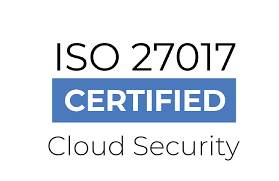CLOUD SECURITY COMPLIANCE

What is Cloud Security Compliance?
Cloud Security Compliance refers to the process of adhering to a set of regulations and best practices established to ensure the security of data stored and processed in cloud environments.
It’s crucial for organizations of all sizes that leverage cloud computing, as it helps to protect sensitive information, maintain legal compliance, and build trust with customers and partners.
Why is Cloud Security Compliance important?
- Protects Sensitive Information: Cloud security compliance helps to protect sensitive information, such as customer data, financial information, and intellectual property, from unauthorized access, data breaches, and other security threats.
- Maintains Legal Compliance: Organizations that are subject to compliance regulations must adhere to those regulations to avoid penalties and fines.
- Builds Trust with Customers and Partners: By demonstrating that they are committed to data security, organizations can build trust with their customers and partners.
- Reduces the Risk of Cyberattacks: Cloud security compliance helps to reduce the risk of cyberattacks by implementing security controls and best practices.
- Business Continuity: Robust cloud security measures and compliance practices contribute to business continuity by minimizing downtime, data loss, and operational disruptions. This is essential for maintaining productivity, service availability, and customer satisfaction.
- Data Integrity: Cloud security compliance mandates mechanisms for verifying the integrity of data to prevent unauthorized alterations or tampering. This can involve cryptographic hashing, digital signatures, and integrity checks.


Why is Cloud Security Compliance important?
- Protects Sensitive Information: Cloud security compliance helps to protect sensitive information, such as customer data, financial information, and intellectual property, from unauthorized access, data breaches, and other security threats.
- Maintains Legal Compliance: Organizations that are subject to compliance regulations must adhere to those regulations to avoid penalties and fines.
- Builds Trust with Customers and Partners: By demonstrating that they are committed to data security, organizations can build trust with their customers and partners.
- Reduces the Risk of Cyberattacks: Cloud security compliance helps to reduce the risk of cyberattacks by implementing security controls and best practices.
- Business Continuity: Robust cloud security measures and compliance practices contribute to business continuity by minimizing downtime, data loss, and operational disruptions. This is essential for maintaining productivity, service availability, and customer satisfaction.
- Data Integrity: Cloud security compliance mandates mechanisms for verifying the integrity of data to prevent unauthorized alterations or tampering. This can involve cryptographic hashing, digital signatures, and integrity checks.
Our Approach
1. Assessment and Gap Analysis:
- Identifying Applicable Regulations and Best Practices: Understanding the compliance requirements relevant to your industry, data, and location. This might involve GDPR, HIPAA, PCI DSS, or others.
- Assessing your Current Security Posture: Evaluating your cloud environment, data security practices, access controls, and existing policies against regulations and best practices.
- Identifying Gaps and Risks: Analyzing the findings from your assessment to pinpoint areas where your cloud security falls short of compliance requirements or needs improvement.
2. Planning and Strategy:
- Developing a Compliance Roadmap: Creating a step-by-step plan outlining how we shall address the identified gaps and achieve compliance. This roadmap would prioritize critical vulnerabilities and establish timelines.
- Defining Roles and Responsibilities: Assigning clear roles and responsibilities within your organization for implementing and maintaining cloud security compliance.
- Choosing and Implementing Security Tools: Selecting and integrating cloud security tools that enable data encryption, access control, threat detection, and vulnerability management.
3. Implementation and Controls:
- Implement Security Controls: Based on the plan and requirements, we shall implement security controls in place to address gaps identified in the assessment. This might involve:
- Strengthening access controls and identity management.
- Implementing data encryption at rest and in transit.
- Configuring secure cloud settings and services.
- Deploying intrusion detection and prevention systems.
- Establishing data backup and recovery procedures.
- Developing and Enforcing Security Policies: Creating clear and enforceable policies for data handling, access controls, incident response, password management etc.








